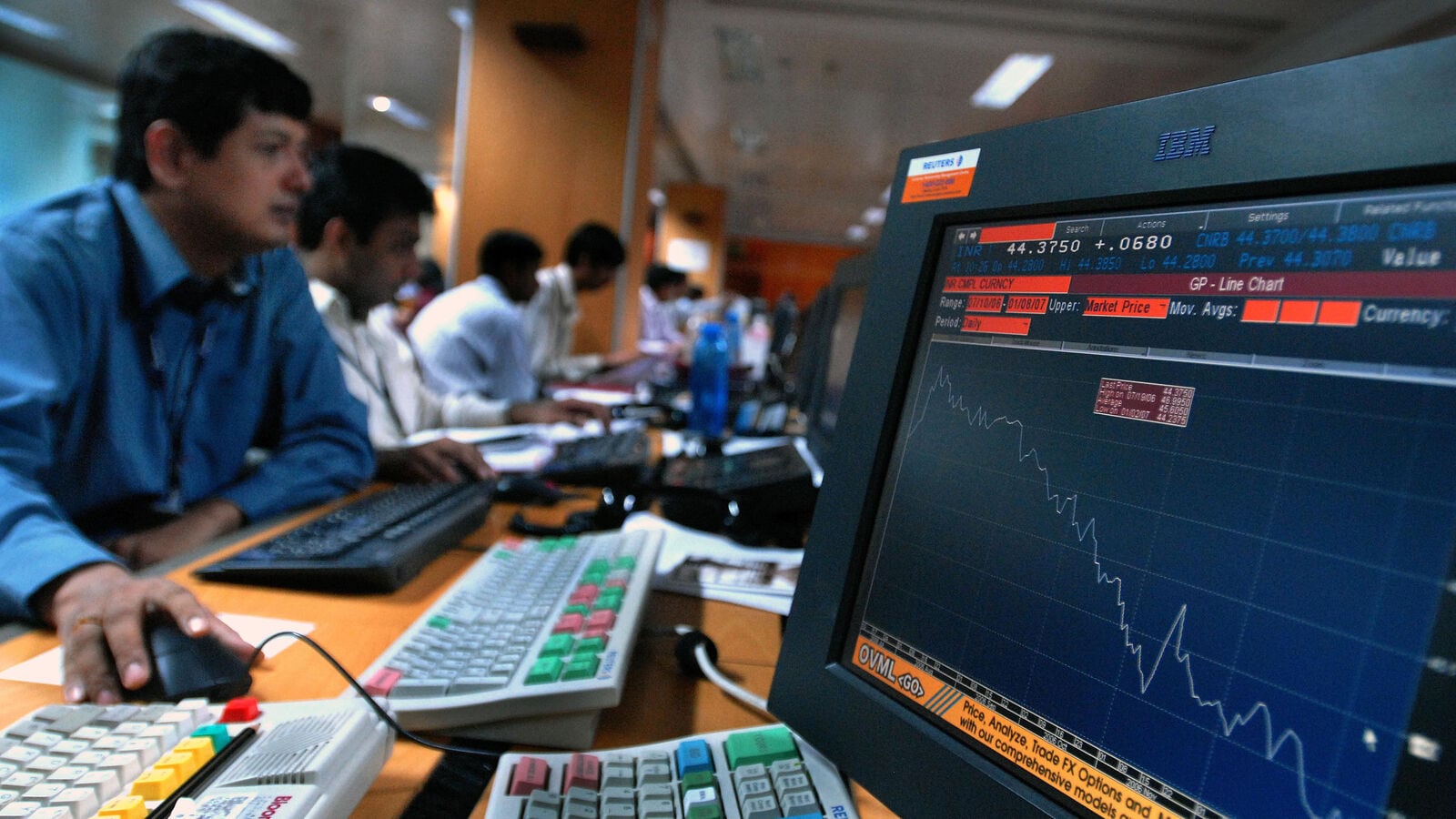Today of the stock market: the Indian stock market slipped into red again after a one -day auxiliary, because the fear of investors returned about ensuring that American negotiations with trading partners about mutual rates would not lead to positive results.
The RBI Repo rates for the second consecutive time did not increase the sentiment of investors, because increased global trading tensions overshadowed domestic policy support.
US President Donald Trump hit China on Tuesday with an extra rate of 54% and took the total rate percentage on goods from the second largest economy in the world to 104%. The new rates for Beijing, together with higher tasks in other countries, including India, are in force today.
With trade tensions that maintain, investors continued their sale, shares drags to several months lows. The Nifty 50 ended the session by 0.61%and closed at 22,399 points, while the Sesex also fell by 0.51%, ending at 73,847.
The wider markets also slid in red, with the Nifty Midcap 100 index fell by 0.51% to close at 49,582 points, while the Nifty Smallcap 100 ended with an even higher loss of 0.86% 15,256 points.
Increased trade tensions and retaliation measures also weigh the target price reductions in different sectors. Information technology is the most difficult hit, because the industry is highly dependent on the US economy for income compared to other domestic sectors.
Worldwide brokerage company Jefferies, estimates of profit per share (EPS) estimates for Indian IT companies with 2-14%. Consequently, the company reduced the price objectives on various Indian IT shares, with reductions ranging from 5% to 35%, stating the rising uncertainty in the sector.
Earlier, the domestic brokerage company Kotak Institutional Equits said that shares of Indian IT companies could fall to 38% if a recession affects the American economy, so that the Nifty IT indexes one of the biggest victims in the current tariff-guided market melting.
The index has emerged again as the upper sectoral laggaard laggaard and lost 2.19%, making the current month fall to 12%. This was followed by a decrease of 1.16% in March and a decrease of 12.53% in February. Metal shares have also emerged as another important victim in the recent market crash, because investors intensify concern about the impact of American trade tensions on China, one of the world’s largest consumers and producers of metals.
RBI delivers the second consecutive rate reduction
As generally expected, the Reserve Bank of India (RBI) announced a 25-based point speed for the second consecutive time in its first bi-monthly policy meeting of FY2025–26 and shifted its position from ‘neutral’ to ‘accommodation’.
With a total reduction of 50 basic points during the last two meetings, the RBI has brought the Repo rate – the rate with which it lends to commercial banks – to 6% of 6.5%. The decrease in consumer prices in recent months has given the central bank the confidence to continue with a second -class reduction.
On the front of inflation, the RBI said that the prices are expected to remain under control in FY2025-26, in the midst of illuminating the vegetable prices that the bank led to reduce its inflation projection for FY26 to 4%, based on a normal Moesson.
However, the RBI has reduced its growth ear spelling for FY26 to 6.5% of 6.7%, with reference to increased rate tensions.
Responding to contemporary market performance, “Vinod Nair, Head of Research, Geojit Investments, said:” Global Financial Markets are witnessing renewed sales pressure after the determination of mutual rates. A trade war escalates the global risk, with an increase in American bond returns that gives rise to a sale in the safe treasury assets of the world. In India, a reduction in the Repo rate, together with the adjustment of an accommodation policy position, is taken as a constructive step. “
“However, it has done little to elevate the general market sentiment, because the world embraces the recession risks. The IT sector remains for the Q4 results, which are estimated as weak. Pharma remains cautious about potential wekins arising from the imposition of the American rates on industry.
Technical prospects
The Rupak De Rupak, Senior Technical Analyst at LKP Securities, said: “Nifty continues to act under the upper tire of the falling canal and the 21-day EMA, which points to short-term weakness and resistor near 22,500. The RSI shows a bearer crossover, reinforces the negative momentum.” “
Indemnification: The views and recommendations in this article are those of individual analysts. These do not represent the views of Mint. We advise investors to check with certified experts before we make investment decisions.











